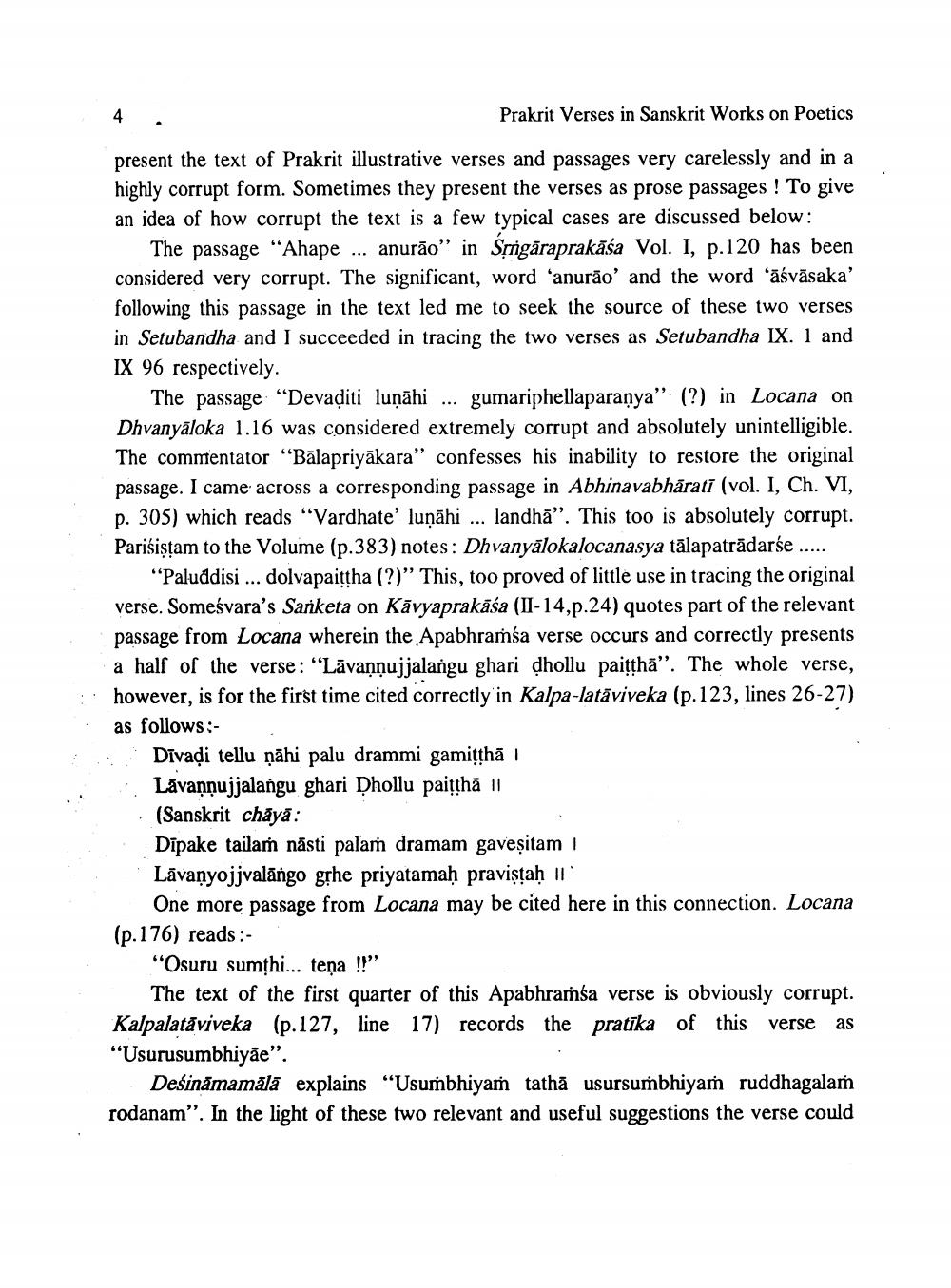________________
Prakrit Verses in Sanskrit Works on Poetics
present the text of Prakrit illustrative verses and passages very carelessly and in a highly corrupt form. Sometimes they present the verses as prose passages ! To give an idea of how corrupt the text is a few typical cases are discussed below:
The passage "Ahape ... anurāo" in Srrigāraprakāśa Vol. I, p.120 has been considered very corrupt. The significant, word 'anurão' and the word 'āśvāsaka' following this passage in the text led me to seek the source of these two verses in Setubandha and I succeeded in tracing the two verses as Setubandha IX. 1 and IX 96 respectively.
The passage "Devaditi luņāhi ... gumariphellaparanya". (?) in Locana on Dhvanyaloka 1.16 was considered extremely corrupt and absolutely unintelligible. The commentator "Bālapriyākara" confesses his inability to restore the original passage. I came across a corresponding passage in Abhinavabharati (vol. I, Ch. VI, p. 305) which reads "Vardhate' lunāhi ... landhā". This too is absolutely corrupt. Parisistam to the Volume (p.383) notes: Dhvanyālokalocanasya tālapatrādarśe ......
"Paluddisi ... dolvapaittha (?)" This, too proved of little use in tracing the original verse. Someśvara's Sarketa on Kāvyaprakāśa (II-14,p.24) quotes part of the relevant passage from Locana wherein the Apabhramsa verse occurs and correctly presents a half of the verse: "Lāvannujjalangu ghari dhollu paitthā”. The whole verse, however, is for the first time cited correctly in Kalpa-latāviveka (p. 123, lines 26-27) as follows:
Dīvadi tellu ņāhi palu drammi gamitthā 1 Lavaņņujjalangu ghari Dhollu paitthā || (Sanskrit chāyā: Dipake tailam nästi palam dramam gaveșitam Lāvaṇyojjvalāngo gļhe priyatamaḥ praviştaḥ IN
One more passage from Locana may be cited here in this connection. Locana (p.176) reads :
"Osuru sumthi... teņa !!"
The text of the first quarter of this Apabhraíśa verse is obviously corrupt. Kalpalatāviveka (p.127, line 17) records the pratīka of this verse as "Usurusumbhiyae".
Deśināmamālā explains “Usurbhiyam tathā usursumbhiyam ruddhagalam rodanam”. In the light of these two relevant and useful suggestions the verse could
Pu




